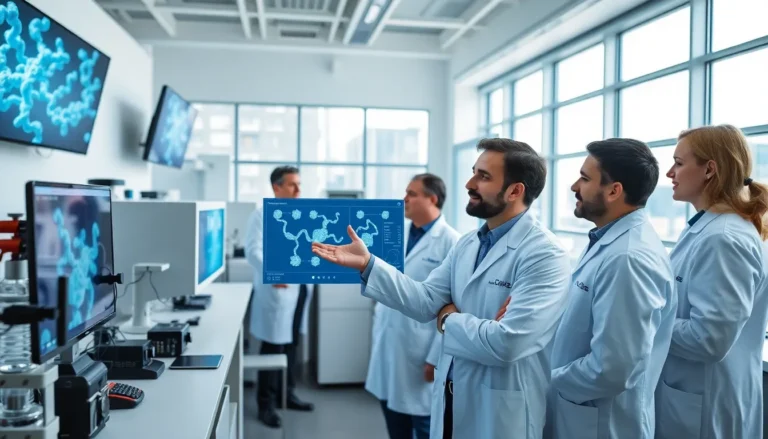Table of Contents
ToggleEveryday life and technology are a match made in heaven. Hardware devices are the unsung heroes that make our digital experiences possible, often without us giving them a second thought. From your trusty keyboard to that sleek smartphone, hardware is everywhere. You may think you know them all, but buckle up, because this journey into the realm of hardware devices is going to be eye-opening, and maybe even a little entertaining – no boring tech jargon here.
Understanding Hardware Devices

Hardware devices are the tangible components that define your computing experience. Unlike software, which runs in the abstract realm of code, hardware can be touched, seen, and sometimes even heard (looking at you, printer). They form the foundation of any tech setup, supporting everything from simple tasks like typing out an email to complex calculations that run advanced software.
These devices come in a variety of shapes and sizes, each serving a unique purpose. At their core, understanding hardware devices begins with recognizing their basic functions. Whether it’s input, output, or storage, each category plays a crucial role in the overall operation of computers and related technologies.
Types of Hardware Devices
Input Devices
Input devices are how you communicate with your computer. Think of them as the bridge between the user and the machine. Keyboards, mice, and touchscreens fall into this category. Each of these devices has its charm, allowing users to interact with their systems in different ways. For instance, the tactile feel of a mechanical keyboard can make typing feel like a symphony.
Output Devices
Once you’ve sent your commands through an input device, it’s time to see the magic happen. Output devices bring your commands to life by displaying, projecting, or transmitting information. Monitors, printers, and speakers turn digital data into comprehensible forms. Imagine getting that project assignment back, printed and ready to go. That’s the power of output devices.
Storage Devices
Now, where do all those lovely bits and bytes go? Enter storage devices. Hard drives, SSDs, and USB flash drives store data and applications, ensuring they’re available when needed. With advances in technology, the capacity and speed of these devices have skyrocketed, making your digital life smoother than ever.
Networking Devices
In this digital age, connectivity is key. Networking devices like routers and modems enable communication between computers and the internet. They form the backbone of online experiences, ensuring you can stream cat videos (or attend that important meeting) without a hitch.
The Role of Hardware Devices in Computing
Interconnectivity and Communication
One of the most significant advantages of modern hardware devices is interconnectivity. In today’s world, devices don’t just sit alone – they talk to each other. Whether through Bluetooth, Wi-Fi, or wired connections, hardware devices create a symbiotic relationship that enhances productivity and user experience. Imagine a world where your smartphone and laptop sync seamlessly. Life is easier that way, isn’t it?
Enhancing User Experience
User experience (UX) is becoming a paramount focus in tech design, and hardware devices play a critical role. High-quality peripherals and components elevate daily interactions, making tasks more enjoyable and efficient. Comfortable keyboards reduce strain during long hours of typing, while vivid displays provide visually appealing experiences. When devices are thoughtfully designed, they create a delightful UX that keeps users coming back for more.
Future Trends in Hardware Devices
Emerging Technologies
The landscape of hardware devices is constantly evolving, driven by innovation and user demand. Emerging technologies such as flexible displays, modular components, and augmented reality devices promise to transform the way we interact with our tech. Imagine a laptop with a bendable screen that fits perfectly into your backpack. The possibilities are endless.
Impact of Artificial Intelligence
Artificial intelligence (AI) is finding its way into hardware devices more than ever. From smart home devices that learn user habits to advanced security systems that adapt to protect homes, AI is enhancing hardware functionality. This integration is not just a trend: it’s the future of technology, creating intelligent systems that provide smarter solutions. As AI continues to develop, hardware devices will become even more capable and intuitive.




